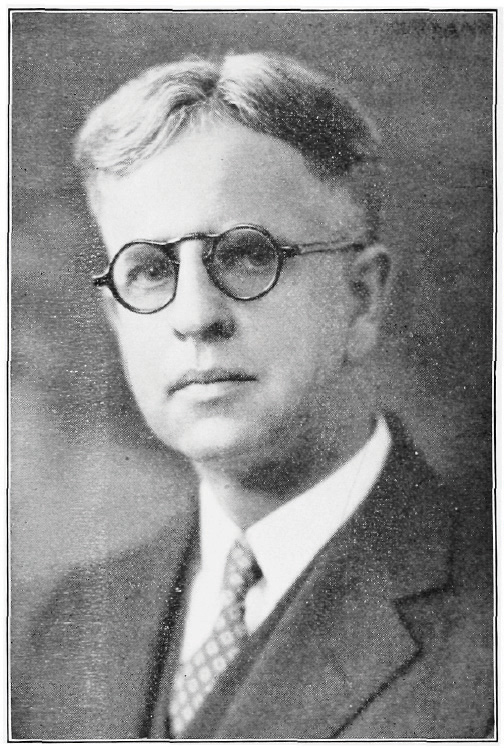You have free articles remaining this month.
Subscribe to the RP Witness for full access to new articles and the complete archives.
Most RP foreign missionaries have served in just one mission field, which is hardly surprising, since missionaries must learn local languages to serve effectively. However, this month we look at one missionary who worked in three separate countries, including the United States.
Walter McCarroll was born in 1873 to a farm family in the Southfield, Mich., RPC. Like many other young men entering the ministry, he attended Geneva College after high school, went to the Reformed Presbyterian Theological Seminary after one year, and finished seminary at age 25. From this point on, however, his course diverged.
In 1858, the Irish RP Synod organized a mission congregation at Geelong, Victoria, in colonial Australia. After its founding minister died in 1897, the congregation was vacant and extremely isolated. The closest RP Church was the new mission work in South China, nearly 5,000 miles away! Although he was a new seminary graduate with no experience outside the United States, McCarroll was chosen to serve as their next minister. He and his fiancée, Mary Jane George, sailed for Ireland. The Eastern Presbytery (which included Geelong) ordained him on Jan. 24, 1899, they were married two weeks later, and they spent their honeymoon sailing to Victoria.
Upon arriving in the new land in April 1899, the McCarrolls found conditions very different from home. The architecture was unusual—nearly all buildings were single-story structures, prompting him to write home, “The people here would think they were on a flying machine if they got to the top of a thirty-story building in New York.” Members were widely scattered, and many RP families lived more than 100 miles away. Because of this, attendance was low, and McCarroll found just one elder and a few dozen members. His efforts were quickly blessed with increase; within weeks, three new elders were ordained and eight adults professed faith. Nevertheless, work in a colonial city proved difficult. Many tasks that are often shared by leaders were placed on McCarroll’s shoulders alone.
His service in Australia concluded in 1903. The RPCNA mission in Cyprus needed another minister, but the Foreign Mission Board was despairing of finding someone after being turned down by many men who could have gone. To their surprise, they received a letter from McCarroll volunteering for an appointment, and they viewed the timing as God’s indication that he should be chosen. He and Mary began their service on Cyprus in October 1903.
McCarroll’s premier service to the church came through his educational work in Cyprus. Five years after arriving on the island, he founded the school that became the American Academy, and he served as the superintendent until his departure from the island in 1919—even during the turbulence of World War I, when less than 50 miles separated Cyprus, a British colony, from the mainland of the enemy Ottoman Empire. However, his educational work did not distract him from the ministry. Throughout his 16 years in Cyprus, he served as minister for the island’s RPs, whether Greeks, Armenians, or Americans.
Following his service in Cyprus, McCarroll’s career was more typical of RPCNA ministers. In late 1920, he began a quarter-century pastorate at Second, N.Y., RPC, and in 1921 he started 34 years of service on the Foreign Mission Board. During his years at Second RPC, he maintained his familiarity with Greek by preaching frequently in a mission to Greeks in New York. Historically, the East Coast churches had grown by immigration from Ireland and Scotland, but falling immigrants prompted them to focus on evangelism and retaining immigrants’ children. The RPCNA’s opposition to political activity was less of a difficulty for non-citizens, but it proved a significant obstacle for their US-born children and outsiders. In 1890, New York had 5 congregations with more than 1,100 members, but by 1920 there were 3 congregations and 350 members. The two remaining churches merged a few months before McCarroll retired in mid-1944, and there were just 125 members.
After McCarroll retired, he and his wife moved to Santa Ana, Calif., RPC. He now turned his focus more fully to “National Reform,” the RPCNA’s longstanding program of seeking explicitly Christian political activity. The Christian Citizens’ Association of Southern California, which he founded, concentrated on agitating for laws requiring Bible reading in the public schools. He remained active for the rest of his life. Just a few days before his death, he was preparing to write a series of small articles for the Witness.
Death came to the 87-year-old McCarroll on Nov. 30, 1960, and Mary followed her husband in death just six months later. In their former home of Larnaca, the American Academy staged a combined memorial service. McCarroll’s former students—including Armenians, Greeks, and Turks—gave speeches, as did RPCNA school officials such as Wilbur W. Weir and T. M. Hutcheson.
